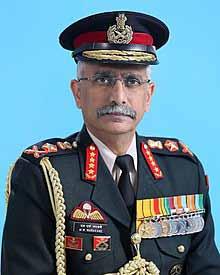Aircraft Lease : The New Opportunity Under DAP 2020
Chiraag Samaddar
T
he Indian Coast Guard (ICG) is responsible for the security and safety, including constabulary and humanitarian functions, spanning across an EEZ of 2.2 million sq km(18th largest in the word), protect a coast line of 7516 Kms (15th largest in the world) and assumes regional responsibility for SAR cover to about 1950 Nm South of Kochi into the Indian Ocean. Since modern maritime challenges are unannounced and threat developments take place with great rapidity, it is vitally important for the ICG to have sizable air assets for effective surveillance, constant monitoring and efficient threat responses. Violations of Indian customs and regulatory laws, Illegal, Unregulated and Unreported Fishing, marine pollution, smuggling of drugs, small arms and illegal immigrants,
34 sailors & warriors
etc. impact coastal safety and security, result in economic losses and create environmental challenges of marine pollution that is fast encroaching into the protein and salt food chain. This in turn leads to health concerns and leads to the ever-increasing social costs due to ingress of drugs and terrorism breaching through the maritime boundaries of our country. Maritime aircraft, including Remotely Piloted Autonomous aircraft (RPAS) and seaplanes provide a ready solution to these tasks. Modern maritime aircraft can be re-equipped with sensors and mission systems dedicated to fulfilment of the essential surveillance and monitoring missions of any modern Coast Guard to mitigate such challenges and threats. They can be launched from ashore and from small deck patrol vessels. Assuming state-of the-art surveillance equipment are fitted on board modern aircraft, flexible overviews of survey areas for marine pollution and seaborne traffic, quick assessments of oil spill sites, and deterrence of potential polluters, drug traffickers and smugglers can be undertaken expeditiously and at a very low cost. The ICG has no better option than to use modern aircraft and RPAS for these missions. However, ICG aviation assets only comprise 38 Dornier coastal surveillance aircraft, four twin-engine Dhruv advanced light helicopters and 20
Chetak single-engine helicopters. Assuming even a serviceability rate of 75% these assets are grossly inadequate to protect our assets, resources and the lives and livelihoods of 18% of India’s population living in nine coastal states, four union territories and 77 districts of our country. Further, Hon’ble Prime Minister, Shri Narendra Modi, has said that the IOR region views India as the net security provider. This makes the requirement for surveillance and response to a variety of maritime challenges very complex, necessitating a higher force level of aircraft assets. Further, these aircraft are all sourced from HAL which also must produce the same aircraft for the Indian Navy and the Indian Air Force. With an average production capacity of less than 6 Do-228 aircraft per year and back log of orders and the Do-228 is hardly a modern aircraft compared to other platforms in the stable. Given these circumstances, and the fact that the ICG would require 120+ aircraft by 2030, it would not be possible for the ICG to achieve the vitally required force levels of its aviation fleet in the given time frame through exclusively relying on induction of ‘new buys’ Do-228 from HAL. Efforts at obtaining aircraft from the ‘market’ have yet to bear fruit. The ICG had earlier issued a RFI to examine feasibility of a larger (6+3+10) Multi











